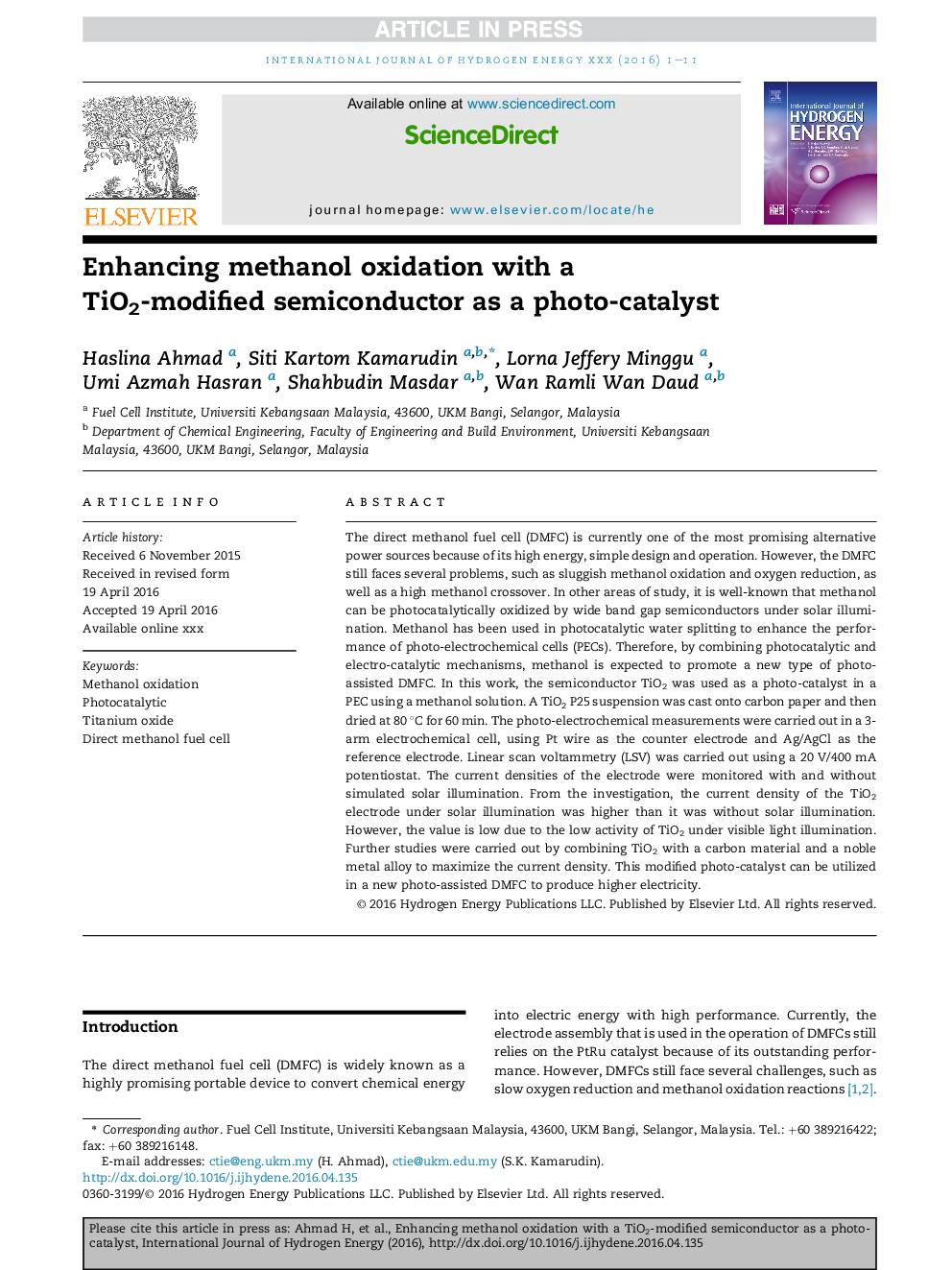| Article ID | Journal | Published Year | Pages | File Type |
|---|---|---|---|---|
| 5147823 | International Journal of Hydrogen Energy | 2017 | 11 Pages |
Abstract
The direct methanol fuel cell (DMFC) is currently one of the most promising alternative power sources because of its high energy, simple design and operation. However, the DMFC still faces several problems, such as sluggish methanol oxidation and oxygen reduction, as well as a high methanol crossover. In other areas of study, it is well-known that methanol can be photocatalytically oxidized by wide band gap semiconductors under solar illumination. Methanol has been used in photocatalytic water splitting to enhance the performance of photo-electrochemical cells (PECs). Therefore, by combining photocatalytic and electro-catalytic mechanisms, methanol is expected to promote a new type of photo-assisted DMFC. In this work, the semiconductor TiO2 was used as a photo-catalyst in a PEC using a methanol solution. A TiO2 P25 suspension was cast onto carbon paper and then dried at 80 °C for 60 min. The photo-electrochemical measurements were carried out in a 3-arm electrochemical cell, using Pt wire as the counter electrode and Ag/AgCl as the reference electrode. Linear scan voltammetry (LSV) was carried out using a 20 V/400 mA potentiostat. The current densities of the electrode were monitored with and without simulated solar illumination. From the investigation, the current density of the TiO2 electrode under solar illumination was higher than it was without solar illumination. However, the value is low due to the low activity of TiO2 under visible light illumination. Further studies were carried out by combining TiO2 with a carbon material and a noble metal alloy to maximize the current density. This modified photo-catalyst can be utilized in a new photo-assisted DMFC to produce higher electricity.
Related Topics
Physical Sciences and Engineering
Chemistry
Electrochemistry
Authors
Haslina Ahmad, Siti Kartom Kamarudin, Lorna Jeffery Minggu, Umi Azmah Hasran, Shahbudin Masdar, Wan Ramli Wan Daud,
